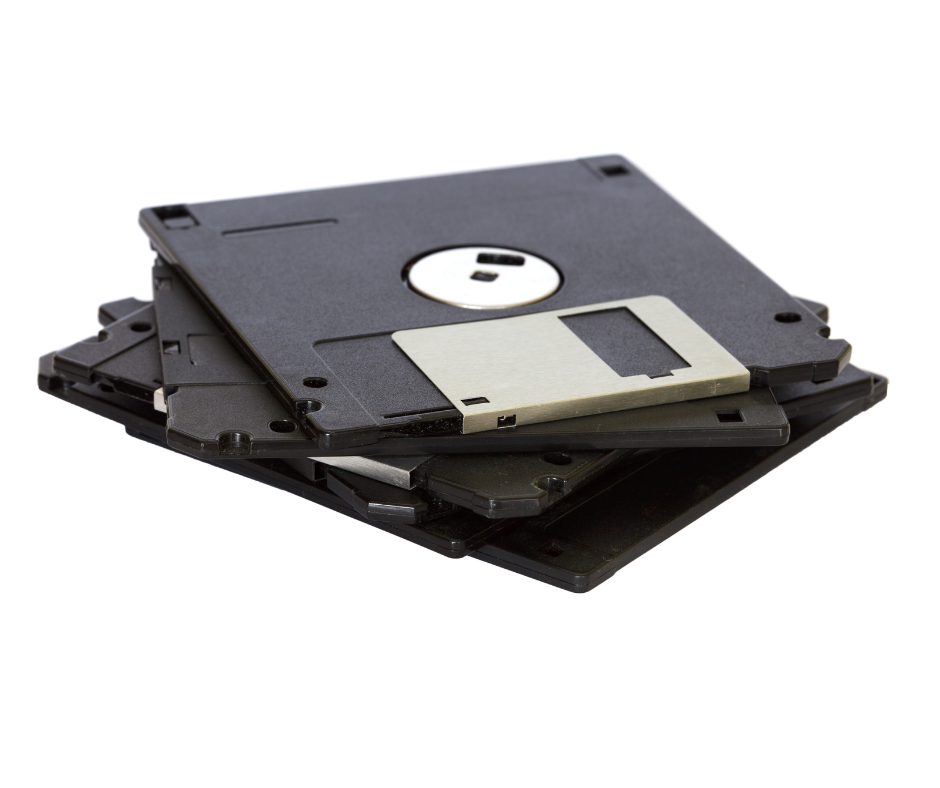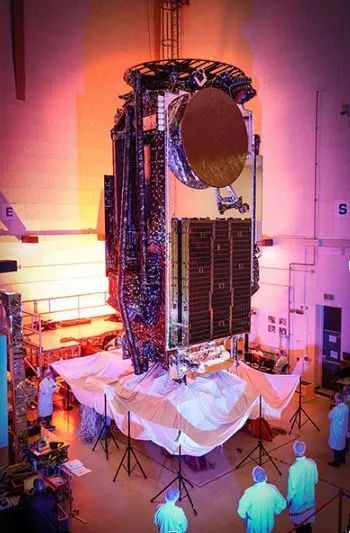The New HughesNet
New HughesNet Satellite
HughesNet is marketing their product/service line as the "New HughesNet" due to changes in HughesNet's offering since launching their new satellite, Jupiter 3. This cutting-edge, super high-capacity ultra high density satellite doubles the capacity of the HughesNet satellite fleet providing internet that is faster and more responsive with unlimited and priority data packages at similar pricing to ongoing service. Jupiter 3 is the biggest and most technologically advanced commercial satellite constructed...ever.

The Evolution of Internet Use
The use of internet has evolved faster than many Internet Service Providers could adapt. Initially, the internet was a method to exchange information - replacing fax machines and allowing uploads and downloads of information without requiring a physical link or floppy disc (remember those?). This evolved into using the internet to find information - surf the net - share information, keeping in touch with email and social media. With this type of use, lag time (or
latency) rarely affected the user's experience of the internet. But within the last 5 years, folks are utilizing the internet for live interactions - skype or zoom or face time meetings, gaming, and television streaming. All of these activities require a more responsive and immediate upload / download.
In town (or in the city), cable provided internet. If you were out of town, for the longest time, you were out of luck - no internet. The first possible internet available was dial-up. Wow, what a trial! When HughesNet first offered their internet via satellite in 2007, it was a hughe ("huge") relief as it was hughe-ly better than dial-up. HughesNet had one of the highest capacity broadband satellites in the world (actually not in the world but in orbit ) providing service for consumer broadband, enterprise networking, emergency communications as well as aero and maritime mobility uses (military - high security).
The Satellite Race
HughesNet's second satellite launch in July 2012 was available for consumer and small business internet provision in North America and was the world's highest capacity broadband satellite at the time of launch.
In December 2016, HughesNet launched it's third satellite to serve the United States, Mexico and Canada which was the first satellite to be able to provide 25 Mbps speeds (which of course now sounds slow, but in 2016, this was considered super fast). This satellite provided service for consumers, businesses, and governments.
So, now there are several different types of satellites available for internet use:
- There are High Earth Orbit satellites; these satellites are geosynchronous - meaning that they stay in position with earth as it rotates about 22,000 miles from earth. For instance, HughesNet satellites are located roughly above the equator; so the satellite stays above Central America serving the American continent as the earth turns by moving with the earth. The New HughesNet Jupiter 3 satellite is the highest capacity and largest commercial communication geosynchronous satellite ever launched.
- There are Low Earth Orbit satellites - like Starlink; these satellites orbit about 1,200 miles from earth. A Low Earth Orbit (LEO) satellite offers very little latency (time of signal to travel between your device and the satellite). But this requires a tremendous number of smaller satellites (and due to small size, they are lower data capacity) to provide consistent service in a geographical spot. Each satellite orbits earth in 1-1/2 to 2 hours time. The signal the consumer is using to watch Netflix must leap from one satellite to the next satellite - how many satellites hand off signal one to the next during an episode of "Friends"? (the antenna signal leaps from one satellite to the next every 4 minutes, so seven satellites are used for signal one after the other in a train so to speak in a 30 minute show). The more consumers using the service the more satellites are needed (due to that low capacity as well as need for more geographical coverage) and more satellites in more orbits. Which is why there are over 4,416 satellites in orbit for Starlink.

Bringing unprecedented capacity for internet connectivity, the Hughes JUPITER 3 is the heaviest geostationary satellite ever launched weighing over 9 metric tons. Jupiter 3 is a ultra-high-density satellite featuring more than 300 spot beams that alleviate congestion and deliver a faster internet experience to the end user. The state-of-the-art ground system for JUPITER 3 has a new dedicated fiber backbone to reduce latency and utilizes artificial intelligence (AI) that automatically reroutes traffic around congestion. The JUPITER-powered HughesNet plans feature download speeds up to 100 Mbps. "Customers expect to be able to stream, videoconference and play games online," said Peter Gulla, senior vice president, Hughes. "The new HughesNet is designed to enable these applications with fast speeds, unlimited data and new low-latency Fusion plans. Since inventing satellite internet in the 1990s, Hughes has been dedicated to constantly innovating our service to meet the needs of customers beyond the reach of cable and fiber connectivity. The new HughesNet is a fundamental reinvention of what satellite internet can be."
What Does This Mean for You?
Out with the Old HughesNet Plans / In with the New HughesNet Plans
Previously HughesNet’s Consumer and Business Plans offered no hard data limits; This meant that if your plan included 100Gb (there were plans offering 25Gb, 50Gb, 100Gb, and 200Gb), once you had reached your data limit, the speed would reduce significantly. The speed could be increased again with purchase of data tokens or by increasing the data plan. When an individual used the internet to check email and upload/download small files, 25Gb was way more than efficient. But as our use of internet evolved, we use more data; for instance, using internet to stream a television show on a big screen HD can use up to 7Gb per hour. Additionally, using the internet for security cameras, Alexa and control features for your home are data hogs (check out for more).
The New HughesNet Plans offer unlimited data and are classified by data speed and priority data packages with the “Select” plan's internet speed up to 50Mbps and including 100Gb priority data, “Elite” or “Fusion” with speeds up to 100Mbps and 200Gb priority data. If you use all your Priority Data, your Standard Data kicks in automatically.
Understanding Priority Data & Standard Data
I know, I thought it too - Double Talk. Here is what is meant by Standard and Priority Data:
Standard Data may be slower than other traffic during high-traffic periods.
Think of the HughesNet internet system (or really any internet system) as an interstate or highway and think of the cars travelling as customers using the internet. In this scenario, Priority Data would be the "Express Lane" you merge onto at the start of each billing cycle.
- Priority Data passes other slowed (standard) traffic on the network.
- The speed limit is the same, but there is less traffic in the Priority Data or "Express Lane".
- When the priority data is consumed, the "Express Lane" ends and you merge onto the main highway; the main highway is Standard data and impacted by the number of users on line in that network at that time.
- You may or may not encounter traffic depending on the time of day
How Can a Satellite 22,000 miles Away Provide a Faster Response? Fusion!
HughesNet has another trick up their sleeve; they are continually expanding their fusion capabilities - a combination of satellite and wireless enabling gaming in rural areas not served by fiber (what used to be cable). As discussed above, in using a geosynchronous satellite for internet, the internet signal travels a long distance from your device to a satellite and back. This distance causes a slight delay known as latency. This delay doesn't impact some online activities (emails) but is noticeable when watching videos, browsing content-rich sites and video conferencing. Low-latency is when there is less lag or buffering when sending latency sensitive requests. Hughesnet Fusion plans combine satellite and wireless technologies for a low-latency and highly responsive internet experience, so you can stream video and enjoy smooth video-conferencing, with less buffering / latency.
How Is This Accomplished?
HughesNet has developed a Multipath Device provided for Fusion plans which identifies the application in use and routes traffic to best the option for the type of data, using either wireless or satellite for transmission:
- Latency-sensitive applications run over wireless.
- Large downloads travel over satellite.
Whole Home Wi-Fi
All of the New HughesNet plans include Wi-Fi Modem with Wi-Fi 6 technology. Wi-Fi 6 delivers improved speed with enhanced security and better performance for multiple devices.
Features:
- Easily connect your wireless devices to the Wi-Fi modem.
- Separate guest Wi-Fi for visitors to keep your home network more secure.
- Wi-Fi 6 incorporates advanced technologies to minimize interference from other nearby Wi-Fi devices and networks.
- Provides a more secure wireless connection than previous Wi-Fi standards
Mesh Wi-Fi Nodes
- Mesh Wi-Fi Nodes extend the modem's signal throughout the home.
- Customers get wall-to-wall Wi-Fi coverage, no more dead zones.
- Professionally installed when ordered with the HughesNet system.
- Customers can add up to 3 Mesh Wi-Fi Nodes at the time of installation.
- Pairs seamlessly with the HughesNet Wi-Fi Modem.
What HughesNet means by "Whole Home Wi-Fi" is the creation of an extended Wi-Fi network by incorporating one or more Mesh Wi-Fi Nodes with your Wi-Fi Modem to extend the reach of the Wi-Fi signal throughout the premises. This eliminates dead zones. You can add up to 3 additional Mesh Wi-Fi Nodes to extend the modem's signal for wall-to-wall Wi-Fi coverage. Mesh Wi-Fi Nodes pair seamlessly with the HughesNet Wi-Fi Modem. Many factors can impact the Wi-Fi signal, including square footage, number of floors, wall composition, modem location within the home, to name a few. Only HughesNet Mesh Wi-Fi Nodes enable HughesNet internet; non-proprietary mesh networks will degrade performance.
Mobile App
The HughesNet Mobile App is the simplest method to set up and manage your Wi-Fi network, Wi-Fi Modem, and optional Mesh Wi-Fi Nodes (if in place). With the HughesNet Mobile App you can:
- Manage network traffic prioritization, for example:
- Prioritize video traffic on specific devices at specific times of the day.
- Define prioritization based on traffic type (e.g., Gaming, Streaming, Browsing, Self-Defined).
- Check status and health of your Wi-Fi network
- Turn Wi-Fi on & off.
- Enable a Guest Wi-Fi network.
- Enable and manage Parental Control.
- Change Wi-Fi network passwords.
- Reboot the Wi-Fi network if necessary.
- Check your Priority Data Use.
- Set the system at Standard Definition or High Definition (to preserve your Priority Data).
The free HughesNet app is available for iOS 9.0 and higher and Android 4.4 and higher. Need to know how to sign up and download the app?
The New HughesNet is a Great Solution
Astonishingly, HughesNet has risen to the need of consumers to provide a well rounded group of solutions to an ongoing problem -
- how to keep up with the evolution of how we use internet
- the move of more consumers rurally.
The New HughesNet is an excellent choice even when it is not the only option with fair pricing and packages to fit most internet needs.
Give us a call to determine if the New HughesNet is the best fit for you!


















